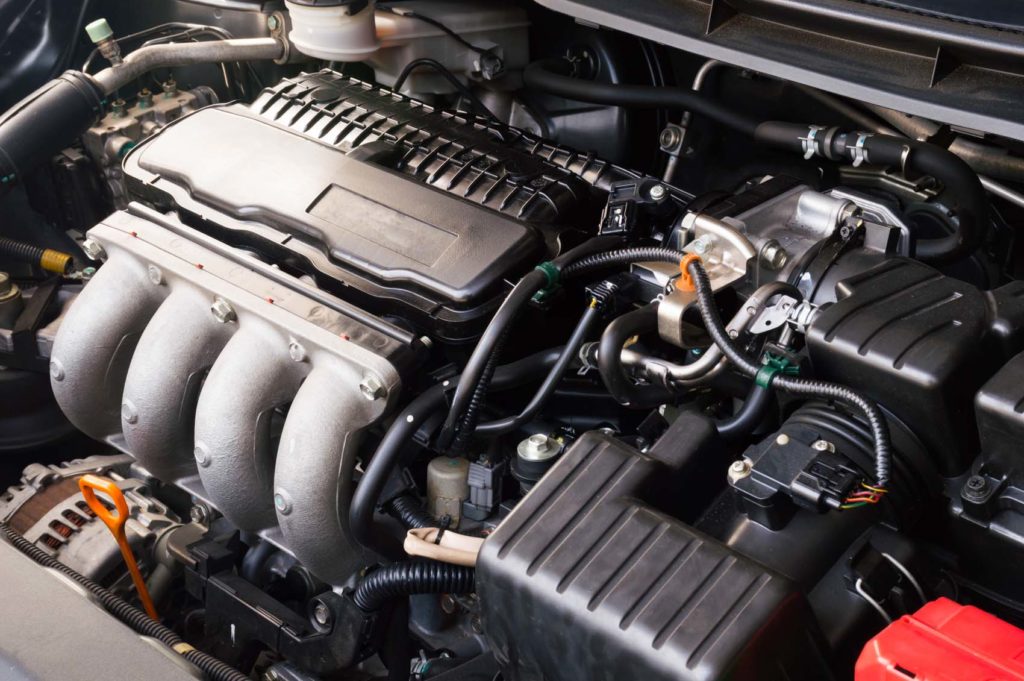The engine control module (ECM) or powertrain control module (PCM) oversees the proper operation of the engine and (in the case of the PCM) powertrain. To run properly, the computer draws battery positive voltage from a power relay and uses the electricity to function properly.
The PCM keeps track of how long it’s power relay takes to de-energize after the driver turns off the ignition. It will log a P068A fault code if the process goes too quickly because fast de-energization can damage the module.

What Does the P068A Code Mean?
The diagnostic trouble code (DTC) P068A stands for “ECM/PCM Power Relay De-Energized Performance – Too Early.”
Note that this code does not appear on many vehicle code lists.
However, Ford describes code P068A as the following:
P068A is set when the non volatile random access memory (NVRAM) write did not complete successfully after the ignition key was turned OFF, prior to PCM shutdown. This DTC also sets when the PCM power relay is de-energized too early.
Possible causes are:
- PCM Relay Control circuit open
- PCM power relay
- Low battery voltage

Be it an ECM or a PCM, control modules have capacitors that perform different roles. Capacitors are like small, short-life batteries. The condenser in a points type ignition distributor is a capacitor. Capacitors filter currents, store energy, or continue providing power to circuits for a few seconds after the control module stops receiving power from the battery.
On some platforms (not all of them), turning off the ignition causes the PCM’s capacitors to release their remaining energy into the power relay. The sudden discharge of power can corrupt the module’s software, damage electrical components, and even completely erase the affected module’s programming. Typically, a relay will have a “clamping” diode or resistor wired in parallel with the relay coil to prevent a voltage spike from the coil itself. But as the points in the relay separate, breaking the circuit causes a secondary voltage spike that can be damaging.
Typically, a relay will have a “clamping” diode or resistor wired in parallel with the relay coil to prevent a voltage spike from the coil itself. But as the points in the relay separate, breaking the circuit causes a secondary voltage spike that can be damaging.
– Richard McCuistian, ASE Certified Master Automobile Technician
Thus, on some platforms, the PCM puts its power relay through a de-energizing process where the relay discharges energy at a slow and controlled rate. This minimizes the risk of voltage spikes that can damage the controller.
Some PCM power relays follow a five-wire design. The control module may use one of these wires to keep track of power relay voltage, especially in the crucial seconds after the ignition turns off.
The PCM keeps track of the rate at which it de-energizes after the driver turns off the ignition. When it detects something wrong with its de-energizing process, it will set code P068A.
P068A on Some Ford Vehicles
Code P068A may appear on some Ford vehicles. On a 2015 Ford Focus ST 2.0L, for example, this DTC is described as, “The non volatile random access memory (NVRAM) write did not complete successfully after the ignition key was turned OFF, prior to PCM shutdown. This DTC also sets when the PCM power relay is de-energized too early.”
The code appears in a 2015 Ford Focus ST 2.0L because of the following conditions:
- PCMRC circuit open
- PCM power relay
- Low battery voltage
Note: The definition of code P068A can differ according to the vehicle manufacturer. Check the appropriate repair manual or repair database for the exact code definition.

What are the Common Causes of the P068A Code?
- PCM failure
- Bad PCM power relay
- Faulty PCM electrical wiring
What are the Common Symptoms of the P068A Code?
- Engine fails to start up
- Illuminated check engine light
- Engine goes through hard starts or doesn’t start at all in cold weather
How to Diagnose the P068A Code

The P068A code is a powertrain code, and it applies to all OBD II-compatible vehicles fitted with an ECM or PCM. If you’re not confident about conducting diagnostic tests on your vehicle, it’s a good idea to let a certified mechanic check it. Otherwise, you can go ahead and diagnose the issue yourself.
How to Fix the P068A Code
Attempting to fix a P068A code can be a frustrating task if you don’t have the right tools and know-how to test the ECM or PCM. In most cases, it’s best to leave the job to professionals.
Are you a DIYer with advanced technical knowledge and hands-on experience? If you want to test and replace your vehicle’s ECM or PCM on your own, it will be helpful to rely on the appropriate repair manual or refer to an online repair database for the task.
Any information provided on this Website is for informational purposes only and is not intended to replace consultation with a professional mechanic. The accuracy and timeliness of the information may change from the time of publication.


















